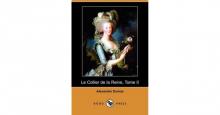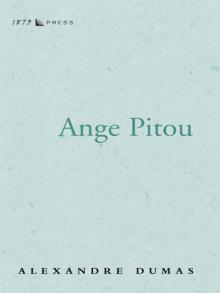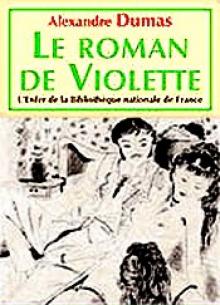- Home
- Alexandre Dumas
The Count of Monte Cristo Page 3
The Count of Monte Cristo Read online
Page 3
The most recent stage version was a new adaptation performed in England in 1994. There have been condensed editions, children’s editions and a comic-book version. There were film adaptations in 1908 (USA), 1913 (USA), 1914 (France), 1934 (USA), 1942 (France), 1953 (France), 1961 (France), 1975 (USA) and 2001 (USA), as well as television versions. The strength of the story is enough to explain why the novel has proved so adaptable to other media, despite its length: the central themes of betrayal, wrongful imprisonment and revenge are clear enough to allow many of the sub-plots to be discarded for reasons of time or space.
Inevitably, something will be lost: there is simply so much there; and, from the earliest days, the process undergone by Dumas’ novel was one of reduction, as if the original was too vast to stand by itself. There is also the matter of the historical moment at which The Count of Monte Cristo appeared.
The mid-nineteenth century saw a continuing struggle to establish the credentials of the literary novel, by giving it the dual aims that Stendhal had helped to pioneer, which were those of exploring the enduring features of human psychology and analysing a particular state of human society. In contrast to such enterprises, fiction which involved larger-than-life characters and implausible situations, Gothic horrors, melodramatic incidents and so on appeared mere entertainment. The gradual emergence of realism in the European novel was not altogether to the advantage of Dumas, whose image was less that of the austere priest than the jolly friar, and whose novels poured out of a factory, the purpose of which was to create entertainment and sell it for money.
This explains why, though Thackeray admitted finding the book impossible to put down, English novelists like George Eliot considered that ‘the French’ – Dumas, Hugo and Balzac – were mistakenly tempted to deal with the exception rather than the rule: to look for melodramatic situations and characters, when they should be exploring the everyday life that revealed what is enduring in human nature. It is not hard, anyway, to guess that the author of Middlemarch and The Mill on the Floss would not find much to please her in The Three Musketeers or The Count of Monte Cristo.
There is also the question of Dumas’ style, which is usually unremarkable; and the fact that he wrote his great novels in collaboration with Maquet, which does not accord with the idea of the author as sole creator. No wonder people have thought they could treat Monte Cristo as a treasure-trove rather than a sacred text, or that the many adaptations, abbreviations and reworkings of it have been done with a good deal less reverence (and consequently, more often than not, a good deal more success) than, say, Claude Chabrol brought to his film version of Madame Bovary. In the main, its fate has been that of most nineteenth-century ‘adventure’ novels: it has been treated as mere entertainment for adults or literature for the young.
The truth is that, more because of the subject-matter than because of its length, the novel has had to be tampered with before it can be offered to young readers; or, as one may conjecture, to readers in mid-Victorian England. And, because this is merely a ‘popular’ novel, as well as one which represents a huge amount of work for a translator, there has been little enthusiasm in the English-speaking world for re-translating it.
Claude Schopp’s edition (Robert Laffont, 1993), which lists the main foreign translations, records nothing into English since 1910. The most readily available edition in Britain at the moment reproduces the anonymous translation first published by Chapman & Hall in 1846. Its editor for the Oxford World’s Classics series (1990), David Coward, writes that ‘with one or two exceptions, the small number of “new” translations since made have drawn heavily upon… this classic version’.
Anyone who has read The Count of Monte Cristo only in this ‘classic version’ has never read Dumas’ novel. For a start, the translation is occasionally inaccurate and is written in a nineteenth-century English that now sounds far more antiquated than the French of the original does to a modern French reader: to mention one small point in this connection, Dumas uses a good deal of dialogue (he wrote by the line), and the constant inversions of ‘said he’ and ‘cried he’ are both irritating and antiquated. There are some real oddities, like the attempt to convey popular speech (which does not correspond to anything in Dumas), when the sailor in Chapter XXV says: ‘that’s one of them nabob gentlemen from Ingy [sic], no doubt…’ Even aside from that, most of the dialogues in this nineteenth-century translation, in which the characters utter sentences like: ‘I will join you ere long’, ‘I confess he asked me none’ and ‘When will all this cease?’, have the authentic creak of the Victorian stage boards and the gaslit melodrama.
It can be argued that this language accurately conveys an aspect of Dumas’ work, but not even his worst detractors would pretend that there is nothing more to it than that. Still less acceptable, however, than the language of this Victorian translation is the huge number of omissions and bowdlerizations of Dumas’ text. The latter include part of Franz’s opium dream at the end of Chapter XXXI, some of the dialogue between Villefort and Madame Danglars in Chapter LXVII, and several parts of Chapter XCVII, on Eugénie and Louise’s flight to Belgium. In some cases the changes are so slight as to be quite hard to detect. In the description of Eugénie at the opera (Chapter LIII) for example, Dumas remarks that, if one could reproach her with anything, it was that, both in her upbringing and her appearance, ‘she seemed rather to belong to another sex’. The English translator renders this: ‘As for her attainments, the only fault to be found with them was… that they were somewhat too erudite and masculine for so young a person’ (p. 542)! At the end of Chapter XCVII, the translation (p. 950) simply omits the few lines of dialogue where Dumas has Eugénie say that ‘le rapt est bel et bien consommê’ – where the word rapt (‘abduction’) has a rather too overtly sexual connotation. Similarly, earlier in the same chapter, where Eugénie jokes that anyone would think she was ‘abducting’ (enlève) Louise – another word used almost exclusively of a man with a woman – the translator prefers the more neutral phrase ‘carrying me off’ and omits altogether Louise’s remark that Eugénie is ‘a real Amazon’. Another anonymous translation (Dent, 1894) refers to ‘the escape’ rather than ‘the abduction’ – which makes nonsense of Louise’s reply that it is not a true abduction since it has been accomplished without violence.
What may be more surprising than these concessions to the prudery of the age is that the Victorian translators left in as much as they did. And the omissions are by no means all to do with sexual matters. At the start of Chapter XXXIV, for example, the translator decides to spare us the description of the route taken through Rome by Albert and Franz on their way to the Colosseum (though the 1894 translator restores it). A whole paragraph analysing the character of M. de Villefort at the start of Chapter XLVIII is cut out; almost a whole page of dialogue between Albert and Monte Cristo, on horses, in Chapter LXXXV is cavalierly omitted (part was restored by the translator of 1894); and so on. This is only a tiny sample of what is, in reality, a vast number of phrases omitted, and occasionally mistranslated.
What we see here, interestingly enough, is a stage in the process of transforming Dumas’ text into something simpler, less complex, less rich in allusions, but more concentrated in plot and action. The 1846 translator already has an idea of what kind of novel this is, and that dictates what he, or she, can afford to omit: travelogue, classical references, sexual and psychological analysis, and so on. None of these is essential to the plot of a thriller, and if some of them will embarrass English readers, then why leave them in? The only problem is that, nearly 150 years later, we do not have quite the same idea of what is and what is not important. It was high time to go back to Dumas, entire and unexpurgated.
As the basis for my translation, I have used the edition by Schopp, quoted above, and the three-volume edition in the Livre de Poche (1973). Both of these use an arrangement of chapters which differs slightly from that in the nineteenth-century English translations. I have followed the Livre de Poche in not changi
ng Dumas’ ‘errors’ of chronology etc. in the text as Schopp does; instead I have pointed out the more important ones in the notes. I owe a debt to Schopp and to Coward’s edition in the World’s Classics series for some of the information in the notes.
On the broader question of translation, I have tried above all to produce a version that is accurate and readable. A great deal of nonsense is written about translation, particularly by academics who approach it either as a terrain for theoretical debate or, worse still, as a moral issue: ‘the translator must always be faithful to his original,’ Leonard Tancock wrote, oddly assuming that translation is a masculine activity, even though on this occasion he was prefacing Nancy Mitford’s translation of La Princesse de Clèves (Penguin, 1978). ‘… he has no right whatever to take liberties with it… Nor has he any right to try to smooth the reader’s path by the omission of “dull” bits, short-circuitings, explanatory additions, radical transferences or changes of order.’ Why? And who says? Is it the reader who is demanding this perfection, this absence of explanatory additions, and so on?
Such academic theorists insist that a translation must read like a translation – it is somehow immoral to conceal the process that has gone into making it. ‘Ordinary’ readers usually demand the opposite, and reviewers in quite respectable papers sometimes show little appreciation of what the process means and involves: ‘Not all of this material works in translation,’ said one serious review of a book by Umberto Eco; and another: ‘… the stories [of Viktoria Tokareva] are well served by their translator, who hardly ever gets in the way’.
In philosophical terms I am quite willing to admit the impossibility of translation, while still having in practical terms to engage in it and to believe that everything must, to some extent, be translatable. I feel no obligation to avoid smoothing the reader’s path and none, on the other hand, to ‘getting in the way’ from time to time. Above all, I want to convey some of the pleasure of reading Dumas to those who cannot do so in the original language and, through my one, particular version (since no translation can ever be definitive), to reveal aspects of his work that are not to be found in any of the other existing versions. This is a new translation and consequently a new interpretation of a great – and great popular – novel. If nothing else, most people would surely agree that it is long overdue.
The Count of Monte Cristo
Contents
I
MARSEILLE – ARRIVAL
II
FATHER AND SON
III
LES CATALANS
IV
THE PLOT
V
THE BETROTHAL
VI
THE DEPUTY CROWN PROSECUTOR
VII
THE INTERROGATION
VIII
THE CHTEAU D’IF
IX
THE EVENING OF THE BETROTHAL
X
THE LITTLE CABINET IN THE TUILERIES
XI
THE CORSICAN OGRE
XII
FATHER AND SON
XIII
THE HUNDRED DAYS
XIV
THE RAVING PRISONER AND THE MAD ONE
XV
NUMBER 34 AND NUMBER 27
XVI
AN ITALIAN SCHOLAR
XVII
THE ABBÉ’S CELL
XVIII
THE TREASURE
XIX
THE THIRD SEIZURE
XX
THE GRAVEYARD OF THE CHTEAU D’IF
XXI
THE ISLAND OF TIBOULEN
XXII
THE SMUGGLERS
XXIII
THE ISLAND OF MONTE CRISTO
XXIV
DAZZLED
XXV
THE STRANGER
XXVI
AT THE SIGN OF THE PONT DU GARD
XXVII
CADEROUSSE’S STORY
XXVIII
THE PRISON REGISTER
XXIX
MORREL AND COMPANY
XXX
SEPTEMBER THE FIFTH
XXXI
ITALY – SINBAD THE SAILOR
XXXII
AWAKENING
XXXIII
ROMAN BANDITS
XXXIV
AN APPARITION
XXXV
LA MAZZOLATA
XXXVI
THE CARNIVAL IN ROME
XXXVII
THE CATACOMBS OF SAINT SEBASTIAN
XXXVIII
THE RENDEZ-VOUS
XXXIX
THE GUESTS
XL
BREAKFAST
XLI
THE INTRODUCTION
XLII
MONSIEUR BERTUCCIO
XLIII
THE HOUSE AT AUTEUIL
XLIV
THE VENDETTA
XLV
A SHOWER OF BLOOD
XLVI
UNLIMITED CREDIT
XLVII
THE DAPPLE-GREYS
XLVIII
IDEOLOGY
XLIX
HAYDÉE
L
THE MORRELS
LI
PYRAMUS AND THISBE
LII
TOXICOLOGY
LIII
ROBERT LE DIABLE
LIV
RISE AND FALL
LV
MAJOR CAVALCANTI
LVI
ANDREA CAVALCANTI
LVII
THE ALFALFA FIELD
LVIII
MONSIEUR NOIRTIER DE VILLEFORT
LIX
THE WILL
LX
THE TELEGRAPH
LXI
HOW TO RESCUE A GARDENER FROM DORMICE WHO ARE EATING HIS PEACHES
LXII
GHOSTS
LXIII
DINNER
LXIV
THE BEGGAR
LXV
A DOMESTIC SCENE
LXVI
MARRIAGE PLANS
LXVII
THE CROWN PROSECUTOR’S OFFICE
LXVIII
A SUMMER BALL
LXIX
INFORMATION
LXX
THE BALL
LXXI
BREAD AND SALT
LXXII
MADAME DE SAINT-MÉRAN
LXXIII
THE PROMISE
LXXIV
THE VILLEFORT FAMILY VAULT
LXXV
THE JUDICIAL ENQUIRY
LXXVI
THE PROGRESS OF THE YOUNGER CAVALCANTI

 The Count of Monte Cristo, Illustrated
The Count of Monte Cristo, Illustrated Knight of Maison-Rouge
Knight of Maison-Rouge![The Three Musketeers - Alexandre Dumas - [Full Version] - (ANNOTATED) Read online](http://i1.bookreadfree.com/14/the_three_musketeers_-_alexandre_dumas_-_[full_version]_-_annotated_preview.jpg) The Three Musketeers - Alexandre Dumas - [Full Version] - (ANNOTATED)
The Three Musketeers - Alexandre Dumas - [Full Version] - (ANNOTATED) The Man in the Iron Mask
The Man in the Iron Mask The Count of Monte Cristo (Penguin Classics eBook)
The Count of Monte Cristo (Penguin Classics eBook) Count of Monte Cristo (abridged) (Barnes & Noble Classics Series)
Count of Monte Cristo (abridged) (Barnes & Noble Classics Series) The Women's War
The Women's War La reine Margot. English
La reine Margot. English The Vicomte de Bragelonne
The Vicomte de Bragelonne__english_preview.jpg) La dame aux camélias (Novel). English
La dame aux camélias (Novel). English The Count of Monte Cristo
The Count of Monte Cristo Balsamo, the Magician; or, The Memoirs of a Physician
Balsamo, the Magician; or, The Memoirs of a Physician Ten Years Later
Ten Years Later The Romance of Violette
The Romance of Violette The Mesmerist's Victim
The Mesmerist's Victim Vingt ans après. English
Vingt ans après. English Le collier de la reine. English
Le collier de la reine. English Taking the Bastile; Or, Pitou the Peasant
Taking the Bastile; Or, Pitou the Peasant The Hero of the People: A Historical Romance of Love, Liberty and Loyalty
The Hero of the People: A Historical Romance of Love, Liberty and Loyalty Louise de la Valliere
Louise de la Valliere Les Quarante-cinq. English
Les Quarante-cinq. English Ange Pitou (Volume 1)
Ange Pitou (Volume 1) The Royal Life Guard; or, the flight of the royal family.
The Royal Life Guard; or, the flight of the royal family. Les trois mousquetaires. English
Les trois mousquetaires. English Une fille du régent. English
Une fille du régent. English The Knight of Maison-Rouge
The Knight of Maison-Rouge The Count of Monte Cristo (Unabridged Penguin)
The Count of Monte Cristo (Unabridged Penguin) Ange Pitou
Ange Pitou The Romance of Violette (vintage erotica)
The Romance of Violette (vintage erotica) The Three Musketeers
The Three Musketeers Three Musketeers (Barnes & Noble Classics Series)
Three Musketeers (Barnes & Noble Classics Series) Georges
Georges Man in the Iron Mask (Barnes & Noble Classics Series)
Man in the Iron Mask (Barnes & Noble Classics Series) The Red Sphinx
The Red Sphinx